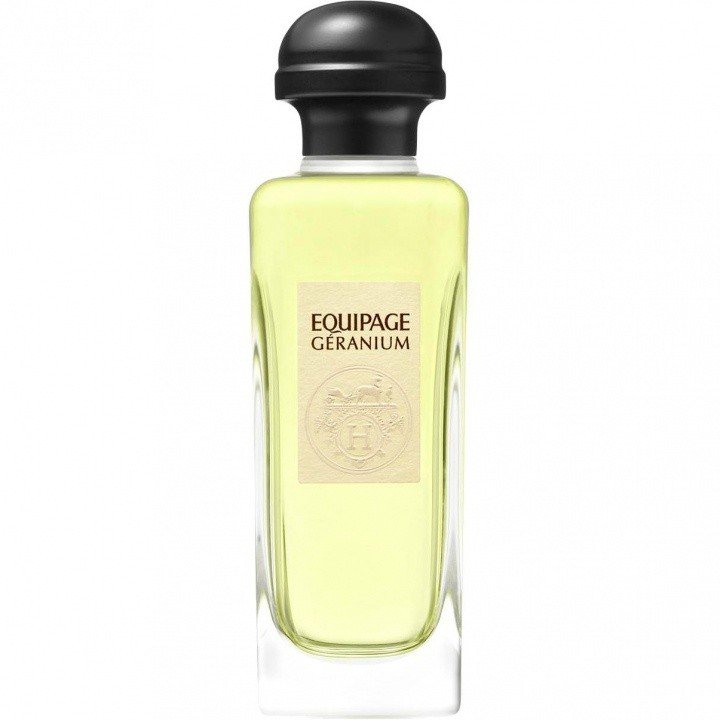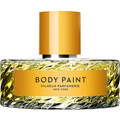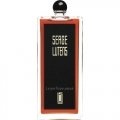24
Top Review
Translated
Show original
Ellena's logic of reduction
Jean-Claude Ellena made no secret of the far-reaching influence that Edmond Roudnitska had on his work, especially during his employment at Hermès. He repeatedly named Eau d'Hermès (1951) as the fragrance he would wear from time to time, his extremely respectful restoration of it speaks for itself, or rather the explicit homages to it, first through Déclaration (1998) and then again more clearly via Épice Marine (2013) and Muguet Porcelaine (2016), his commentary on Roudnitska's Diorella (1972), to stick with the most obvious ones.
Besides the brevity of a 'formula' he likes to mention, however, it is probably Ellena's urge to write that he learned most from Roudnitska. Together with Hermès' marketing activities, a dream combination. Ellena's writings may lack the urgency and the seamless transition from the specialist literature of the time to the general that made Roudnitska's writings so special, but they are certainly entertaining, and the almost impressionistic, narrative style corresponds well to Ellena's image of fragrance as he has created it since the 2000s. However, I also assume that Ellena and Hermès had an immense influence on the (linguistic) reduction of communicated notes: Even in the titles of the Hermèssence range, the focus has been hard-hitting, name-wise, on just two protagonists since the beginning.
The corresponding notes are then often expanded to three: head, heart and base. A formula for success, it seems, which does experience the necessary headwind from the straight-edge hardcore realists of some indie labels, I'm thinking of N-O-A-M's sympathetically consistent transparency in naming what's really in it, for example, or of Versȧtıle, which in turn lists all (?) synthetic fragrances; but on the whole, this reduction in information is still standard, easier to convey and understand, or to 'recognize' all the notes given in texts - a similar trend could also be read on menus of trendy restaurants almost at the same time, around the end of the 00's, for example at Fergus Henderson's St John's in London.
While Ellena was able to live out this celebrated reduction with the Hermès fragrances - some of his most beautiful works are among them, which hardly smell 'aged' even years after their release - it is the three variations on the Hermès classics Bel Ami (1986), Amazone (1974), and Equipage (1970) that I appreciate as particularly successful, above all the Equipage Géranium, which has since been discontinued.
Geranium, clove and sandalwood, that's how it is outlined in Ellena's new-speak. If Equipage Géranium were a completely new fragrance, this would not be surprising, except that Equipage Géranium is a commentary on Equipage, the Hermès classic, which is always treated as a superlative among the old Hermès men's fragrances, from the hands of the legendary Guy Robert, and was therefore equipped with a far more extensive note pyramid(s), which has certainly changed over the years.
Equipage Géranium and Equipage are immediately very similar, so much so that I wonder if Ellena didn't go all out and try to clone notes with non-obvious substitutes or fragrances of a completely different origin, such as in his rose-free rose perfumes, Amazone Rose (2014) or later Rose & Cuir (2019)?
However, if you give yourself over to Ellena's trinity, it is definitely fun: the geranium note is particularly great here, as it is not that very minty rose geranium that was most lavishly realized in MPG's Jardin Du Nil (1988) or more technicistically clear in Geranium pour Monsieur (2009) or more recently in L'Eau Revée d'Hubert (2023), but rather resembles the geranium varieties that I know more from southern German flower boxes than from perfumes, and which continue to characterize certain regions in the foothills of the Alps, whose waxy, hairy leaves stink rather vehemently and peculiarly, especially for children's noses. Ellena has staged this kind of geranium note here, at the interface with clary sage, with a hint of additional mint and subtle soapiness that already linked the old Equipage with Calèche (1961).
Clove is representative of a spice blend through which the old Equipage clearly speaks: cloves, cinnamon, allspice, nutmeg, a little cumin, dry, almost dusty, difficult to divide as befits well thought-out blends. Basically all warm spices, which are counterbalanced by the initial geranium freshness and do not drift into the warm and cozy, quasi oriental. A slight soapiness that was already associated with the old Equipage with Calèche (1961) resonates in a subdued form.
The base remains mysterious and the part that took me the longest to make sense of - especially since the old Equipage base contained just about everything that made up a civilized 70's base - oakmoss, musk, dark woods - but certainly also (still natural) sandalwood, i.e. Indian sandalwood, which Ellena counts among the 'light woods', as the botanical name for Santalum album suggests. An equally dry sandalwood note infused with preceding spices and floral notes, but hardly creamy, as sandalwood has always been since Ernest Beaux' production in No. 5 EdT (1924) and Bois des Iles (1926), among others.
Sandalwood fragrances also fascinate because of their high potential for abstraction: far less than representations of other woods, they do not resemble their natural equivalent so obviously at first glance when isolated; the trick with many sandalwood fragrances seems to be a combination with spices, as Equipage Géranium also makes use of: Elizabeth Arden's Sandalwood Cologne (1956), MPG's Santal Noble (1988), Etro's Sandolo Cologne (1989), Lutens' Santal de Mysore (1991) or Santal Blanc (2011). Santal Blanc (2011) or Yann Vasnier's Santal Blush (2011) work with this constellation, albeit in very different ways - Ellena, of all people, created an interesting exception with Santal Massoïa (2011), which almost completely dispenses with the spicy counterparts in an independent way.
Back to Equipage Géranium and its sandalwood finish, which most likely makes me think of a slimmed-down and drier interpretation of the 'old' Santal Noble - the effect is astonishing, a remarkably reduced, yet very solid and seemingly small-scale composed Equipage base, as if pressed into a mold of sandalwood is the result. Despite this simpler, more modernist form, it is still very, very Equipage.
Even if a good starting position was secured with Equipage, Ellena has achieved a great but very discreet success here, which probably came onto the market a little too early in 2015, as the retro wave was not yet as clear as it has been for a few years. What's more, the certain seriousness of Equipage was worlds away from the plaisir gardens, Terre vintage bottles or Hermèssence Haiku's. In his writings, Ellena speculated on further variations of Hermès classics that were never to come. The pyramid on pyramid is coherent for me, Ellena's logic of reduction in formula and language, as well as its implementation, is convincing in Equipage Géranium.
Besides the brevity of a 'formula' he likes to mention, however, it is probably Ellena's urge to write that he learned most from Roudnitska. Together with Hermès' marketing activities, a dream combination. Ellena's writings may lack the urgency and the seamless transition from the specialist literature of the time to the general that made Roudnitska's writings so special, but they are certainly entertaining, and the almost impressionistic, narrative style corresponds well to Ellena's image of fragrance as he has created it since the 2000s. However, I also assume that Ellena and Hermès had an immense influence on the (linguistic) reduction of communicated notes: Even in the titles of the Hermèssence range, the focus has been hard-hitting, name-wise, on just two protagonists since the beginning.
The corresponding notes are then often expanded to three: head, heart and base. A formula for success, it seems, which does experience the necessary headwind from the straight-edge hardcore realists of some indie labels, I'm thinking of N-O-A-M's sympathetically consistent transparency in naming what's really in it, for example, or of Versȧtıle, which in turn lists all (?) synthetic fragrances; but on the whole, this reduction in information is still standard, easier to convey and understand, or to 'recognize' all the notes given in texts - a similar trend could also be read on menus of trendy restaurants almost at the same time, around the end of the 00's, for example at Fergus Henderson's St John's in London.
While Ellena was able to live out this celebrated reduction with the Hermès fragrances - some of his most beautiful works are among them, which hardly smell 'aged' even years after their release - it is the three variations on the Hermès classics Bel Ami (1986), Amazone (1974), and Equipage (1970) that I appreciate as particularly successful, above all the Equipage Géranium, which has since been discontinued.
Geranium, clove and sandalwood, that's how it is outlined in Ellena's new-speak. If Equipage Géranium were a completely new fragrance, this would not be surprising, except that Equipage Géranium is a commentary on Equipage, the Hermès classic, which is always treated as a superlative among the old Hermès men's fragrances, from the hands of the legendary Guy Robert, and was therefore equipped with a far more extensive note pyramid(s), which has certainly changed over the years.
Equipage Géranium and Equipage are immediately very similar, so much so that I wonder if Ellena didn't go all out and try to clone notes with non-obvious substitutes or fragrances of a completely different origin, such as in his rose-free rose perfumes, Amazone Rose (2014) or later Rose & Cuir (2019)?
However, if you give yourself over to Ellena's trinity, it is definitely fun: the geranium note is particularly great here, as it is not that very minty rose geranium that was most lavishly realized in MPG's Jardin Du Nil (1988) or more technicistically clear in Geranium pour Monsieur (2009) or more recently in L'Eau Revée d'Hubert (2023), but rather resembles the geranium varieties that I know more from southern German flower boxes than from perfumes, and which continue to characterize certain regions in the foothills of the Alps, whose waxy, hairy leaves stink rather vehemently and peculiarly, especially for children's noses. Ellena has staged this kind of geranium note here, at the interface with clary sage, with a hint of additional mint and subtle soapiness that already linked the old Equipage with Calèche (1961).
Clove is representative of a spice blend through which the old Equipage clearly speaks: cloves, cinnamon, allspice, nutmeg, a little cumin, dry, almost dusty, difficult to divide as befits well thought-out blends. Basically all warm spices, which are counterbalanced by the initial geranium freshness and do not drift into the warm and cozy, quasi oriental. A slight soapiness that was already associated with the old Equipage with Calèche (1961) resonates in a subdued form.
The base remains mysterious and the part that took me the longest to make sense of - especially since the old Equipage base contained just about everything that made up a civilized 70's base - oakmoss, musk, dark woods - but certainly also (still natural) sandalwood, i.e. Indian sandalwood, which Ellena counts among the 'light woods', as the botanical name for Santalum album suggests. An equally dry sandalwood note infused with preceding spices and floral notes, but hardly creamy, as sandalwood has always been since Ernest Beaux' production in No. 5 EdT (1924) and Bois des Iles (1926), among others.
Sandalwood fragrances also fascinate because of their high potential for abstraction: far less than representations of other woods, they do not resemble their natural equivalent so obviously at first glance when isolated; the trick with many sandalwood fragrances seems to be a combination with spices, as Equipage Géranium also makes use of: Elizabeth Arden's Sandalwood Cologne (1956), MPG's Santal Noble (1988), Etro's Sandolo Cologne (1989), Lutens' Santal de Mysore (1991) or Santal Blanc (2011). Santal Blanc (2011) or Yann Vasnier's Santal Blush (2011) work with this constellation, albeit in very different ways - Ellena, of all people, created an interesting exception with Santal Massoïa (2011), which almost completely dispenses with the spicy counterparts in an independent way.
Back to Equipage Géranium and its sandalwood finish, which most likely makes me think of a slimmed-down and drier interpretation of the 'old' Santal Noble - the effect is astonishing, a remarkably reduced, yet very solid and seemingly small-scale composed Equipage base, as if pressed into a mold of sandalwood is the result. Despite this simpler, more modernist form, it is still very, very Equipage.
Even if a good starting position was secured with Equipage, Ellena has achieved a great but very discreet success here, which probably came onto the market a little too early in 2015, as the retro wave was not yet as clear as it has been for a few years. What's more, the certain seriousness of Equipage was worlds away from the plaisir gardens, Terre vintage bottles or Hermèssence Haiku's. In his writings, Ellena speculated on further variations of Hermès classics that were never to come. The pyramid on pyramid is coherent for me, Ellena's logic of reduction in formula and language, as well as its implementation, is convincing in Equipage Géranium.
13 Comments
Latest Reviews
 Intersport 3 months ago
Intersport 3 months ago
Detour V - L P P - R I P - ? !
After just five years, Le participe passé was removed from the Lutens range in last year's restructuring alongside my favorites such as El Attarine (2008). Now, five years is nothing special for many manufacturers, but it is for Lutens,...
Translated




